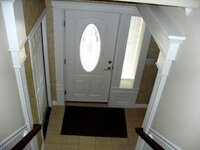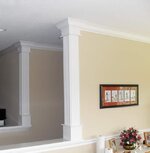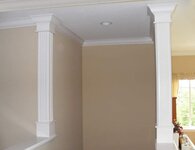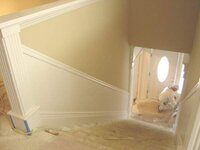Bronze Lifetime
- Messages
- 5,834
- Reactions
- 2,176
Cbzdel, we even made the maple hardwood flooring (see second pic down) on a table saw. I had a chance to buy the cured maple really cheap (there is a housing recession you know) so we ripped the boards in both directions and cut them to length everywhere there was a knot.
They sell a set that replaces the table saw blade. One part cuts the tongues and the other part cuts grooves. You do each edge that way on the table saw with the fence and you have flooring. After it is installed, you use the big (rented) sander to smooth it and then you apply the finish, sanding between coats. I saved about 2/3 the cost of actual maple flooring that way. That job alone way more than paid for a good table saw.
They sell a set that replaces the table saw blade. One part cuts the tongues and the other part cuts grooves. You do each edge that way on the table saw with the fence and you have flooring. After it is installed, you use the big (rented) sander to smooth it and then you apply the finish, sanding between coats. I saved about 2/3 the cost of actual maple flooring that way. That job alone way more than paid for a good table saw.











 Cutting a 10 ft piece of crown molding upside down and backwards on your table saw would be fun for me to watch!
Cutting a 10 ft piece of crown molding upside down and backwards on your table saw would be fun for me to watch! 






